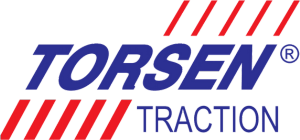Brian D wrote to us inquiring about oil options in a high-performance application:
Hello Torsen!
I have a 2017 Mustang GT Performance Pack car with Torsen 3.73s. I have added a Paxton Supercharger and will be occasionally taking it to the drag strip.
Due to the vast amount of opinions on the internet I figured best to ask you.
Two questions.
- What weight oil would be suggested
75/90 or 75/140?
- Should I add a fiction modifier to the oil as well?
I appreciate any feedback back
Thank you
-Brian
Brian,
Thanks for contacting Torsen. Normally, I’d tell people to stick with the OEM recommendation, since the differential is not the only (or most important) component dependent on that lube. In this case, the application is a little removed from a stock situation. Ford uses their own 75W85 oil with friction modifier from the factory. They mainly do this to reduce oil windage drag load in the axle, though it comes with a slight penalty of the quality of lubrication it provides. Previously, they used 75W140 for anything that was high torque or severe duty.
Typically, heavier oil weights provide better protection since they leave a heaver film of oil on parts. This provides better lubrication, it also can provide better shock protection. It is worth noting, however, that the heavier the oil film is, the more it will reduce locking effect (or torque bias ratio) of the differential. Essentially, anything that reduces friction in the diff reduces its locking characteristic. Between 75W90 and 75W140, you probably won’t know the difference. But in applications (like FWD cars) that run in ATF, the difference is notable. Also, heavier weight oils typically absorb and handle high heat better before breaking down. With all of that in mind, I would personally use the 75W140.
With regards to friction modifier, it is there for NVH reasons. Limited slip differentials – even helical gear designs like Torsen – can make assorted noises in tight turns with low to moderate loads. Clutch diffs chatter, gear diffs squeak or moan. Modifier usually fixes these noises because it helps manage the frictional transition between static and dynamic modes. But in doing this, it does reduce the overall friction in the differential. As I said above, this has bearing on the differential’s performance as a result. In some cases, it can reduce the locking effect as much as 10%. For normal street cars, this is worth the tradeoff. For you, it may not be. However, you always have the option of adding modifier to the lube later on if needed.
I hope this helps.
JTEKT Torsen North America, Inc.
